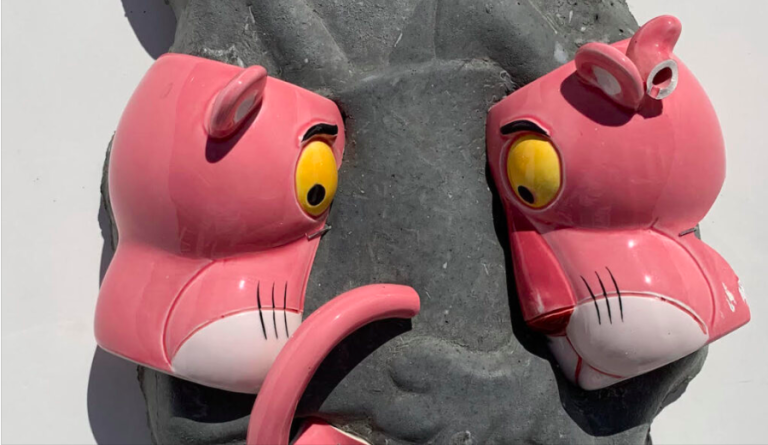Nestled near the vibrant city of Boston, USA, Scott Bruce has carved a niche for himself in the world of art with a career spanning several decades. His journey is a captivating tale of artistic evolution and daring exploration. From his early days as a sculptor and director of artist spaces to his later ventures into the world of collectibles, Bruce’s artistic trajectory has been nothing short of extraordinary.

In the ’80s and ’90s, Bruce created his distinctive collections of vintage lunch boxes and cereal boxes. These collections were not mere displays of nostalgia but were masterfully curated assemblages that spoke volumes about culture, consumerism, and the human psyche. Bruce’s ability to transform everyday objects into art showcased his unique perspective and innovative approach to art-making.
However, it was during the unprecedented times of the COVID-19 pandemic that Bruce found renewed inspiration and embarked on a creative journey that would lead to the birth of his Flintstone ceramic and concrete wall hanging sculptures. It all began with a serendipitous mishap involving a Wilma Flintstone mug acquired from a yard sale. This chance encounter sparked an idea that would evolve into Bruce’s Pop-Smack collection—a series of sculptures that defies categorization.
Bruce’s artistic philosophy is deeply rooted in a rich tapestry of influences, ranging from childhood memories and encounters with historical artifacts to unexpected inspirations like the prehistoric drama of LA’s La Brea Tar Pits and the eccentricity of crack-pot car dealer Dick Balch. These diverse influences converge in Bruce’s work, imbuing each piece with a sense of narrative depth and intrigue.
One of the greatest aspects of Bruce’s art is his innovative use of materials, particularly his technique of embedding ceramics in concrete—a method reminiscent of Frank Lloyd Wright’s architectural work. This juxtaposition of delicate ceramics against the ruggedness of concrete lends Bruce’s sculptures a tactile and visually arresting quality that sets them apart.
Bruce’s travels and experiences have also left a mark on his artistic sensibilities. His time in Iran, surrounded by the ancient ruins of Persepolis and the majestic reliefs of Persian bas-reliefs, has infused his work with echoes of ancient grandeur and historical resonance.
Now, let’s delve deeper into one of Bruce’s most recent works: “Adding the 3rd Dimension,” which showcases a Pink Panther on Pink Panther ceramic and concrete sculpture. This particular piece serves as a testament to Bruce’s fearless exploration of the boundaries between art and societal norms. Bruce has a penchant for what he refers to as “transgressive” Smackers, where the ceramic breaks in a specific manner, demanding a composition in relation to the concrete base that is bound to challenge and even offend polite society.
In “Adding the 3rd Dimension,” the unpredictable nature of chance fracturing has conspired to create a ribald homage that delves into the complexities and idiosyncrasies of male hydraulics. This unexpected twist in the ceramic’s form and structure adds layers of meaning and interpretation to the piece, prompting viewers to confront their own preconceptions and biases.
Bruce himself acknowledges the provocative nature of this artwork, admitting to feeling a mix of both shame and amusement. He finds himself laughing at the sheer absurdity of it all while also recognizing the deeper implications and societal commentary embedded within the sculpture. This blend of humor, introspection, and social critique is characteristic of Bruce’s oeuvre, making “Adding the 3rd Dimension” a compelling example of his unique artistic vision and unapologetic approach to exploring the human condition through art.
In conclusion, Scott Bruce’s art is a vibrant tapestry of creativity, ingenuity, and daring exploration. His ability to transform everyday objects into captivating works of art and his unique artistic vision make him a great artist.

